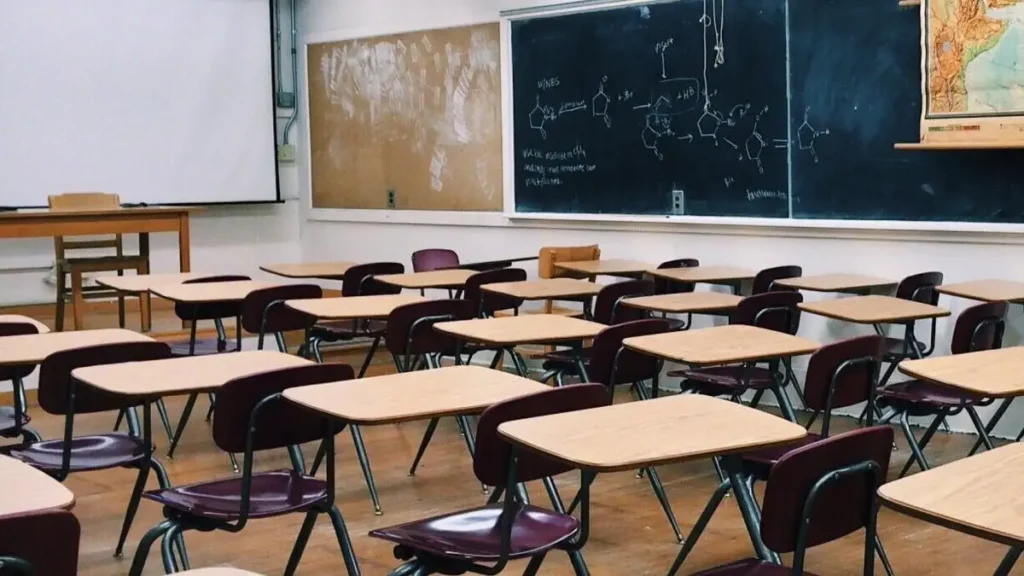Over 1,200 Government Schools Shut in Himachal Pradesh in Two Years Due to Low Enrolment
In a significant shift in Himachal Pradesh’s education landscape, the state government has shut down more than 1,200 government schools in the past two years. The main reason behind this move is the steadily declining student enrolment in many areas. Education Minister Rohit Thakur confirmed this while outlining the state’s efforts to restructure the school system and improve overall quality.

Low Enrolment Forces Closures
Many of these schools had fewer than 10 students, and some had none at all. Minister Thakur explained that operating such schools did not make sense, either financially or academically. “Schools with no students cannot fulfill their purpose. We are shifting our focus and funds to improve active schools,” he said.
Several factors have contributed to this trend—declining birth rates, increasing migration to cities, and growing trust in private schools. These changes have left many rural schools with empty classrooms and limited activity.
Rural Areas Feel the Pinch
Remote and tribal regions have felt the impact most strongly. In these areas, schools often play a central role in the community, beyond just education. Families now worry that children will have to travel longer distances to reach functional schools, which could discourage attendance.
Many parents, especially those with young children or daughters, have raised concerns about safety and accessibility. However, education officials assured families that alternative arrangements exist. They claimed that no child has been left without access to nearby schools.
“We always review the surrounding options before closing any school,” said an education officer. “We make sure children continue their education at a nearby location.”
Reforms Aim to Improve Quality
Despite the backlash, the state government stands by its decision. Officials believe these closures allow them to concentrate resources on improving education standards. Instead of spreading resources thin across empty schools, they plan to build stronger infrastructure and hire more qualified teachers for the schools that remain.
Minister Thakur emphasized that the government is working to transform the education system. “We are not just counting schools; we’re working to ensure that the learning environment in each school is strong, modern, and efficient,” he said.
The state has launched teacher training initiatives, invested in digital classrooms, and upgraded essential facilities in many schools. These improvements aim to make government schools more attractive to parents and students alike.
Political Tensions Rise
Opposition parties have criticized the closures, accusing the government of ignoring rural needs. They argue that, instead of shutting down schools, the administration should have addressed the underlying issues—such as poor infrastructure, lack of staff, and weak community engagement.
Leaders from opposition groups claim the closures might widen the gap between urban and rural education. They also fear that this move will push more families toward private schools, creating added financial stress for low-income households.
Minister Thakur defended the policy. He stated that the government inherited a broken system and had to make difficult choices to fix it. “We can’t afford to waste public money on schools that no one attends. Our goal is to create schools that deliver real learning,” he said.
Private Schools on the Rise
One of the biggest reasons behind the drop in government school enrolment is the increasing appeal of private institutions. Parents—even those with modest incomes—often prefer private schools because they offer English-medium instruction, better infrastructure, and a disciplined environment.
This shift has placed pressure on public schools to evolve. While some government schools maintain good reputations, many continue to struggle due to poor facilities and teacher shortages.
Education analysts believe that unless the state improves the quality of public education, families will keep turning to private options—deepening educational inequality.
National Trends Reflect Similar Challenges
Himachal Pradesh is not the only state facing this issue. Across India, many states report declining enrolments in public schools, especially in rural areas. Experts say the challenge lies not in keeping schools open, but in making them truly effective and appealing.
The Himachal government plans to continue evaluating schools across the state. Officials may close or merge more schools if they find similar patterns of low attendance. At the same time, they promise to upgrade key schools with modern facilities, better staffing, and new programs like vocational training.
A Delicate Balance
Shutting down more than 1,200 schools reflects the state’s attempt to balance resources with real needs. While many people view this decision as necessary, others worry it could reduce access to education in remote communities.
Still, the government insists that these closures represent a step toward meaningful reform. Instead of propping up failing schools, they want to build stronger institutions that offer real value to students.
https://www.cvc.gov.in/The coming years will show whether this approach improves educational outcomes. For now, the move has sparked important conversations about how India should reshape its public education system to meet modern demands.






